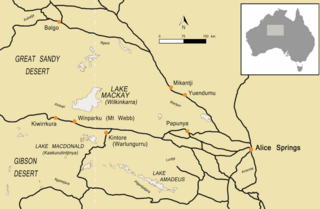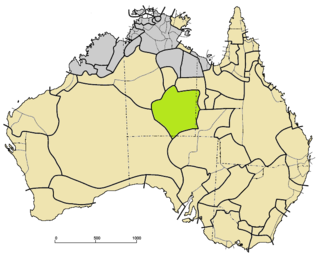
The Indigenous languages of Australia number in the hundreds, the precise number being quite uncertain, although there is a range of estimates from a minimum of around 250 up to possibly 363. The Indigenous languages of Australia comprise numerous language families and isolates, perhaps as many as 13, spoken by the Indigenous peoples of mainland Australia and a few nearby islands. The relationships between the language families are not clear at present although there are proposals to link some into larger groupings. Despite this uncertainty, the Indigenous Australian languages are collectively covered by the technical term "Australian languages", or the "Australian family".
Language revitalization, also referred to as language revival or reversing language shift, is an attempt to halt or reverse the decline of a language or to revive an extinct one. Those involved can include linguists, cultural or community groups, or governments. Some argue for a distinction between language revival and language revitalization. There has only been one successful instance of a complete language revival: that of the Hebrew language.
Tagish is an extinct language spoken by the Tagish or Carcross-Tagish, a First Nations people that historically lived in the Northwest Territories and Yukon in Canada. The name Tagish derives from /ta:gizi dene/, or "Tagish people", which is how they refer to themselves, where /ta:gizi/ is a place name meaning "it is breaking up.
Badimaya is an Australian Aboriginal language. It is a member of the Kartu subgroup of the Pama–Nyungan family, spoken by the Badimaya people of the Mid West region of Western Australia.
Kaurna is a Pama-Nyungan language historically spoken by the Kaurna peoples of the Adelaide Plains of South Australia. The Kaurna peoples are made up of various tribal clan groups, each with their own parnkarra district of land and local dialect. These dialects were historically spoken in the area bounded by Crystal Brook and Clare in the north, Cape Jervis in the south, and just over the Mount Lofty Ranges. Kaurna ceased to be spoken on an everyday basis in the 19th century and the last known native speaker, Ivaritji, died in 1929. Language revival efforts began in the 1980s, with the language now frequently used for ceremonial purposes, such as dual naming and welcome to country ceremonies.

Pintupi is an Australian Aboriginal language. It is one of the Wati languages of the large Pama–Nyungan family. It is one of the varieties of the Western Desert Language (WDL).
An indigenous language, or autochthonous language, is a language that is native to a region and spoken by its indigenous peoples. Indigenous languages are not necessarily national languages but they can be; for example, Aymara is both an indigenous language and an official language of Bolivia. Also, national languages are not necessarily indigenous to the country.

The Dharug language, also spelt Darug, Dharuk, and other variants, and also known as the Sydney language, Gadigal language, is an Australian Aboriginal language of the Yuin–Kuric group that was traditionally spoken in the region of Sydney, New South Wales, until it became extinct due to effects of colonisation. It is the traditional language of the Dharug people. The Dharug population has greatly diminished since the onset of colonisation. The term Eora language has sometimes been used to distinguish a coastal dialect from hinterland dialects, but there is no evidence that Aboriginal peoples ever used this term, which simply means "people". Some effort has been put into reviving a reconstructed form of the language.
Mingginda or Minkin is an extinct Australian Aboriginal language, perhaps a language isolate, of northern Australia. It was spoken by the Mingin people in the area around Burketown, on the southern coast of the Gulf of Carpentaria, in an area that contains the headwaters of the Leichhardt River.

Arrernte or Aranda, or sometimes referred to as Upper Arrernte, is a dialect cluster in the Arandic language group spoken in parts of the Northern Territory, Australia, by the Arrernte people. Other spelling variations are Arunta or Arrarnta, and all of the dialects have multiple other names.
Nyulnyul is an extinct Australian Aboriginal language, formerly spoken by the Nyulnyul people of Western Australia.
Ali Mills is an Indigenous singer based in Darwin, Northern Territory. She is a Larrakia woman with some Irish ancestry.

Bunuba is an Australian Aboriginal language spoken by some 41 older Bunuba adults, most of whom live in Junjuwa, an Aboriginal community in Fitzroy Crossing in Western Australia. Bunuba is not related to the Pama-Nyungan language family that spans the majority of Australia; however, it is a relative of Guniyandi. Both are subgroups of the Bunuban language family. Bunuba consists of two dialects, 'light' and 'heavy' Bunuba.
Wadi-Wadi is an extinct Indigenous Australian language once spoken in Victoria and New South Wales.

Alngindabu, also spelt Alyandabu and also known as Lucy McGinness,, was a female senior elder (Almiyuk) from Chapana, near the Finniss River in the Northern Territory of Australia.
The Kungarakany people, also spelt Koongurrukuñ, Kungarrakany, Kungarakan and other variants, are an Aboriginal Australian people of the Northern Territory. They were called the "Paperbark People" by European settlers.
The Stapleton Siding massacre was a massacre of Aboriginal Australians at Stapleton, Northern Territory, Australia. The massacre, which was committed by supplying poisoned damper that likely contained weed-killer, killed approximately 80 Kungarakany and Warray people.
Valentine Bynoe McGinness usually known as Val McGinness was an Aboriginal rights activist. He was a Larrakia and Kungarakany man.






